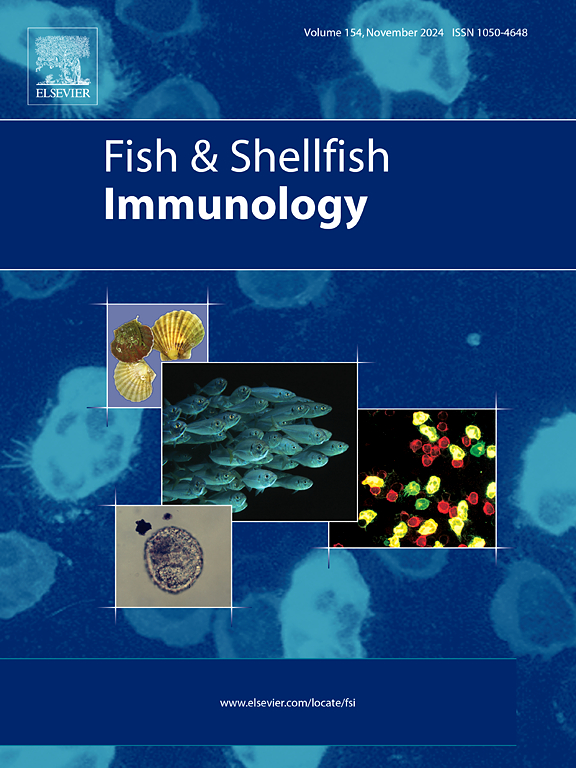Transcriptomic and metabolomic analysis revealed potential mechanisms of growth and disease resistance dimorphism in male and female common carp (Cyprinus carpio)
IF 4.1
2区 农林科学
Q1 FISHERIES
引用次数: 0
Abstract
Sexual dimorphism is well-documented in aquaculture, particularly regarding growth differences, wherein one sex often grows faster than the other. However, despite the phenomenon being so widely documented, its underlying molecular mechanisms remain poorly understood. As an important digestive and immune organ, the gut plays key roles in the regulation of fish growth. In this study, we conducted RNA-seq and metabolomic analysis on the gut of female and male common carp. We discovered that growth-related pathways, such as “Glycolysis/Gluconeogenesis” and “Riboflavin metabolism” are significantly enriched in the gut of female carp. Conversely, pathways linked to disease resistance, such as “Th17 cell differentiation” and “Autophagy-animal” are predominantly enriched in male carp. Following intraperitoneal injection of spring viraemia of carp virus (SVCV) into both male and female carp, quantitative reverse transcription polymerase chain reaction (RT-qPCR) analysis and histopathological staining confirmed that male carp exhibit greater disease resistance compared to females. This study identified the disease resistance dimorphism in common carp and specific mechanisms underlying growth differences. Our findings offer valuable insights for the application of growth dimorphism and disease-resistant breeding in fish.
求助全文
约1分钟内获得全文
求助全文
来源期刊

Fish & shellfish immunology
农林科学-海洋与淡水生物学
CiteScore
7.50
自引率
19.10%
发文量
750
审稿时长
68 days
期刊介绍:
Fish and Shellfish Immunology rapidly publishes high-quality, peer-refereed contributions in the expanding fields of fish and shellfish immunology. It presents studies on the basic mechanisms of both the specific and non-specific defense systems, the cells, tissues, and humoral factors involved, their dependence on environmental and intrinsic factors, response to pathogens, response to vaccination, and applied studies on the development of specific vaccines for use in the aquaculture industry.
 求助内容:
求助内容: 应助结果提醒方式:
应助结果提醒方式:


